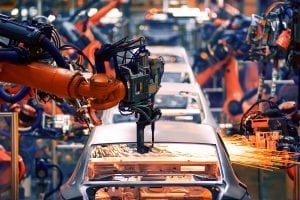5 Ways Connected Worker Technologies Ensure Quality and Safety for Food and Beverage Companies
While food and drink are essential for basic human survival, today’s food and beverage producers face a raft of challenges. There’s the rising specter of contamination as food-poisoning bacteria become more resistant. There’s the rapid spread of information (and misinformation) about recalls and outbreaks, thanks to social media and a 24/7 news cycle. There’s increasing consumer demand for endless food and beverage options, which means processes like changeovers and inspections now occur much more frequently and require greater precision.
Most recently, food and beverage and CPG manufacturers must contend with the affects of inflation, from costs of raw materials and operations, supply chain disruptions, lower profit margins and changes in consumer behavior due to these rising productions costs impacting shelf price.
For all these reasons (and more), food and beverage companies need to be more vigilant than ever about maintaining the quality and safety of their products, and keeping up-to-date, accurate and accessible records of their operations. Yet, their on-the-ground workers might still be putting them at risk. Why?
Everyday quality and safety risk in food and beverage manufacturing
Leaps of faith occur every day on the plant floor because there are gaps between the best efforts of those who define food quality and safety procedures, and the best efforts of those who execute them.
Quality and safety teams develop correct, thorough, regulation-compliant procedures. But they have little visibility into whether or not they’re being executed correctly, especially when paper-based records are buried in binders and “archived” in filing boxes.
Meanwhile, operators try to follow the procedures, but sometimes the steps don’t reflect and fit into operational realities. So, workers may use their best judgment to do what seems most important. In an analog environment, that’s a chronic problem because often there’s no means of fixing a bad fit between mandated procedures and what’s actually happening on the ground. Operators often don’t have opportunities to easily and quickly provide feedback or suggest alternatives.
How to increase quality control and safety
New connected worker software reduce risk and facilitate regulatory compliance by closing these gaps between the definition of food quality and safety procedures, and the execution of those procedures. They:
- Transform static, paper-based documents into live information.
- Streamline quality assurance (QA), audit and certification processes.
- Improve traceability and response time when quality and safety incidents occur.
- Integrate proactive risk reduction into operations.
- Generate and update processes in real time.
With these mobile-first technologies, standard operating procedures are always up-to-date in all locations. Work activity can be monitored and measured in real-time. And, inspectors and management have access to a digital record of performance over time, making it easier to demonstrate regulatory compliance and track progress against operational key performance indicators (KPIs).
Ready to revolutionize your operational workflows? Experience the power of Parsable’s Connected Worker® software firsthand and discover how our solution can improve quality and safety by digitizing your frontline.







